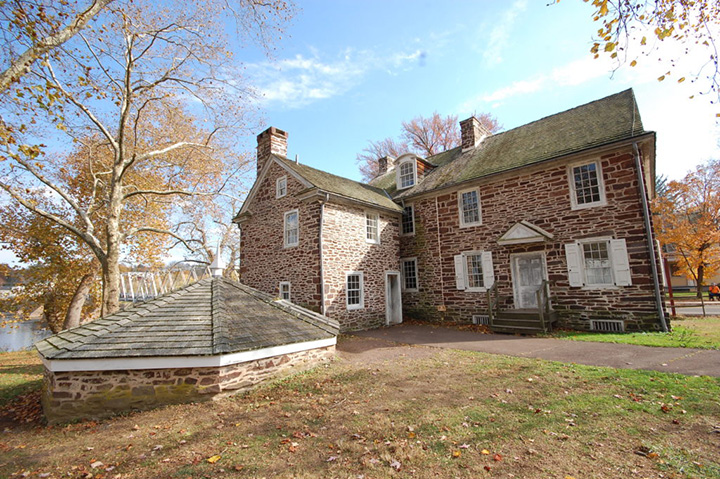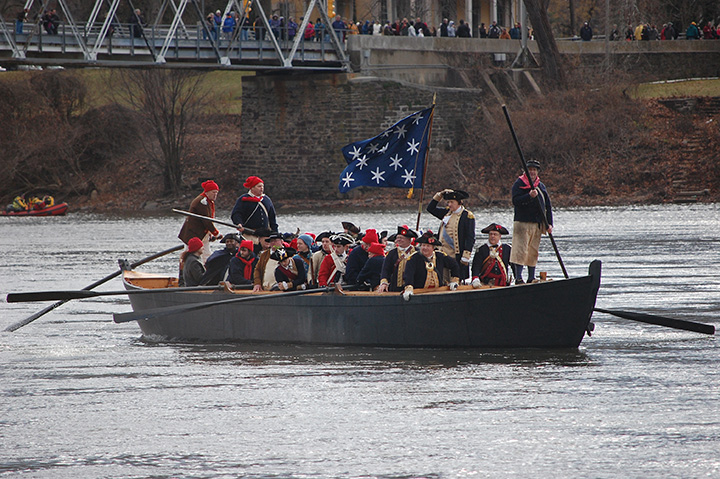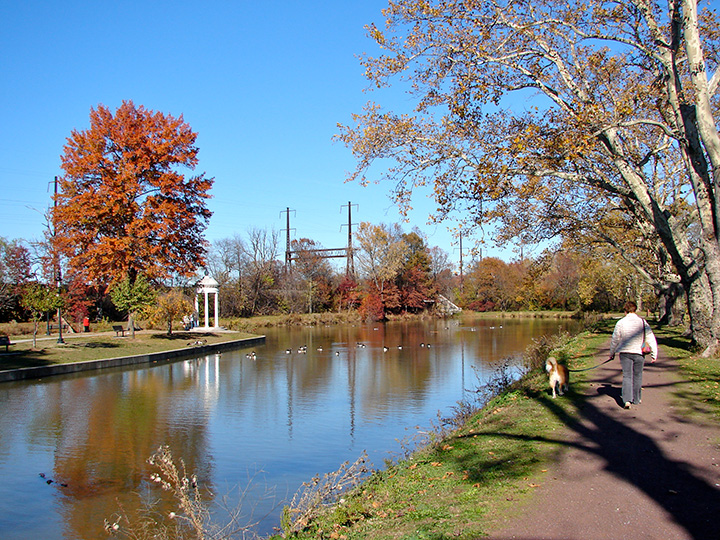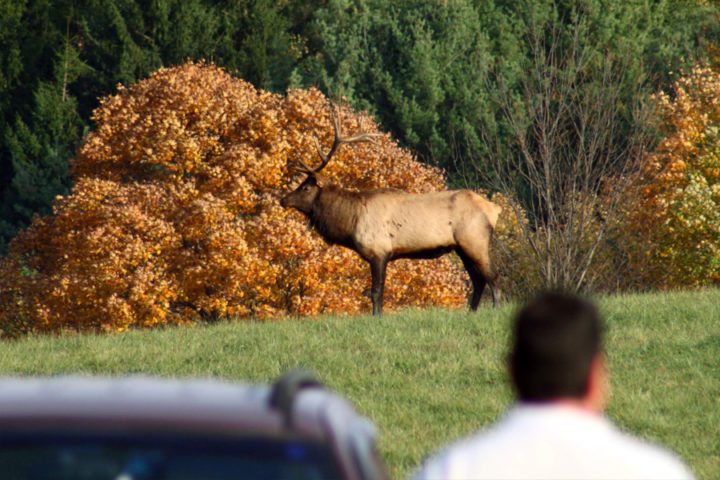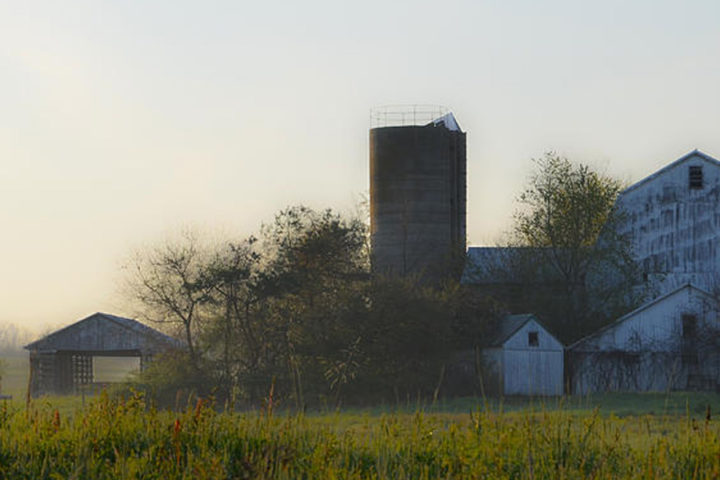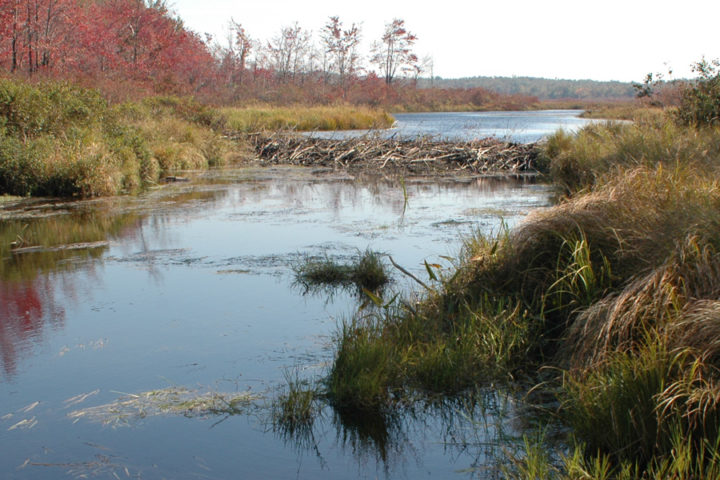Near the very banks where George Washington launched his nation-defining attack, an 80,000 square-foot shopping plaza was planned. Businessman Sam Marrazzo had purchased 22 wooded acres wedged between Washington’s Crossing Historic State Park and the Delaware Canal State Park with the goal of building a supermarket.
But residents of Washington’s Crossing — a small village named for that fateful Christmas night of 1776 — protested the project. Nine years later, the historic property became parkland.
The Conflict
John D. Titterton, now a township supervisor, was just another citizen voicing his disapproval when Marrazzo submitted the supermarket project for municipal approval.
“We have images of American icons that we carry around with us,” Titterton said. “If I say the Statue of Liberty, you can picture that… say Mount Rushmore and it appears in your mind. This development was akin to building a McDonald’s on Mount Rushmore.”
Sam Marrazzo wasn’t thinking about history when he saw a sign offering 22 acres of commercial land for sale. He’s in the business of developing and owning supermarkets in New Jersey and Pennsylvania. As a businessman and a resident of the village, Marrazzo knew no large markets existed within township lines.
The Washington’s Crossing site had almost everything: a good price, a great location, and a growing community. It just made sense.
What the site didn’t have was a zoning ordinance conducive to Marrazzo’s plans. Upper Makefield Township’s zoning ordinance set a limit on the size of any new building project; Marrazzo’s plan exceeded the maximum size allowance. The struggle began when he applied for a variance.
Thousands of people signed a petition asking the township not to approve any zoning changes. Hearings on the issue were packed with residents. Each time Marrazzo was told he wasn’t in compliance, he redrafted his construction plans. Each time he was met with more opposition.
While Marrazzo was shot down again and again, it was almost inevitable that he would eventually submit a development plan that required minimal or no variances. And when he did, the historic property would be developed in spite of the community’s wishes and efforts. Even if Marrazzo gave up and sold the property, the next owner would be back seeking a development approval.
Fortunately, there was a solution.
The Solution
It became clear that the best way to end the struggle was to buy the land at fair market value — to fairly compensate Marrazzo for his investment — and conserve it. However, as much as this made sense, there were serious obstacles.
Where was the money? The township was not prepared to pay the full value of the property. The Pennsylvania Department of Conservation and Natural Resources was interested in adding the land to the Delaware Canal State Park but couldn’t come up with money in a timely fashion. Most importantly, would Marrazzo agree to sell?
State park officials asked the Wildlands Conservancy to help broker a deal. The Conservancy, like other nonprofit land trusts, conserves land by reaching voluntary agreements with landowners for the purchase or donation of property.
“Our job was to kind of steer things around,” said Dennis Collins of the Wildlands Conservancy. “We know how to do these kind of deals; we’ve done many before.”
Marrazzo agreed to sell the land for $2.2 million.
The Conservancy took out a bank loan for $1.5 million to help finance the land purchase and began raising money in earnest. The Conservancy hoped to receive a Keystone Recreation, Park and Conservation Fund grant for the conservation project. Keystone Fund grants, administered by the Pennsylvania Department of Conservation and Natural Resources, require that recipients match the funds they are awarded dollar for dollar. *
The Conservancy met the financial challenge, garnering a $1,050,000 Keystone Fund grant and the required matching funds, including $200,000 from the Pennsylvania Department of Transportation’s scenic byways program, $500,000 from the township’s open space fund and roughly $450,000 from the Bucks County Agricultural Preservation Fund.
In 1999, the Wildlands Conservancy and Upper Makefield Township became co-owners of the land — about six years after Marrazzo made his first application for a variance.
“I think it turned out pretty well,” said Richard Gestrich, Upper Makefield Township manager since 1982. “During the process, I received emails from all over the U.S. — and even Canada — from people who didn’t want to see the tract adjacent to the park developed.”
“The land in Washington’s Crossing was preserved because of the awareness of the people in the area,” said Collins. “The development would have had major traffic and scenic impacts on what some consider the most historic site in our country.”
In 2002, the Conservancy and the township gave the land to the state to expand Delaware Canal State Park. The township retained its historic and scenic character. Marrazzo invested the sale money in the renovation of an older shopping center about 12 miles away.
“As long as they’re happy, I’m happy,” Marrazzo said. “We found it’s best to go where you’re wanted.”
Voters Value Open Space
Residents of Upper Makefield Township have voted in several referendums to fund open space protection. The township is one of a growing number of communities with residents willing to pay more in wage, property or sales taxes to buy and conserve open space.
In November 2002, voters across the United States approved ballot measures that contained $3 billion for conserving open space. The 94 successful measures were among 111 considered on state and local ballots — a passage rate of 85 percent.
Voting results in Pennsylvania were even stronger. Conservation referenda were held in two counties and eleven local municipalities during 2002. All thirteen conservation measures passed with an average of 70 percent of voters voting in favor.
Voter support makes sense. Buying open space protects quality of life. It can also save residents tax dollars.
Consider a 100-acre farm or woodlot. As is, it requires next to nothing in government services. Developed, the land could fit 100 homes on one — acre lots, each with a family in need of schools, road maintenance, snow removal, and other municipal services. The new tax revenues from these new families almost never cover the cost of services provided by the school district and municipality. Consequently, taxes increase.
It’s simple math. Conserving land costs less.
“People in rapidly growing communities are starting to realize that they are going to pay taxes either by putting aside land now or in school taxes later,” said Michael Frank, director of community planning for Heritage Conservancy. “The payback for preserving land comes a lot sooner.”


